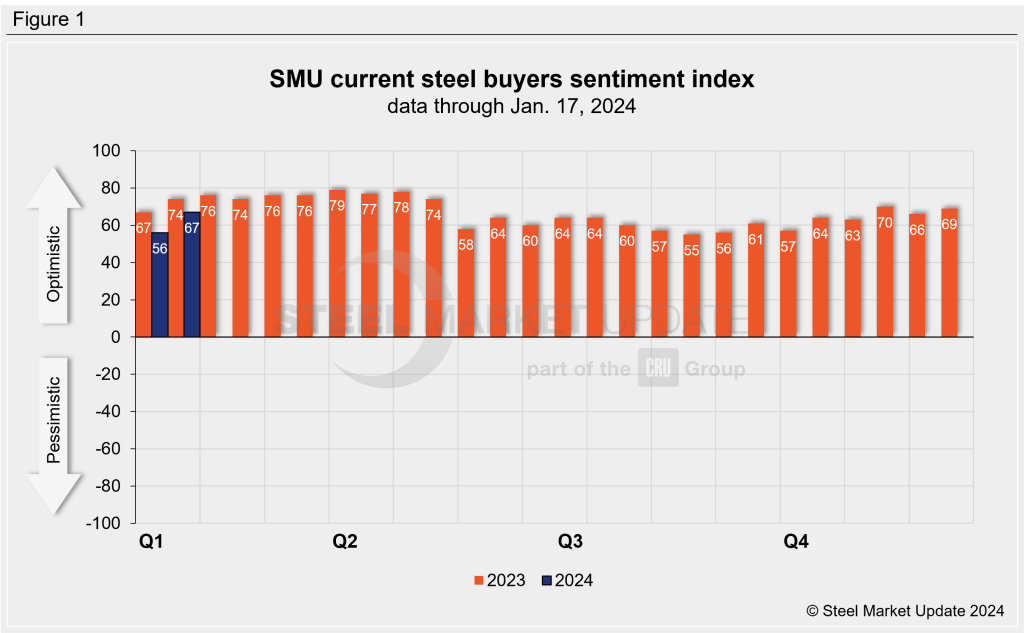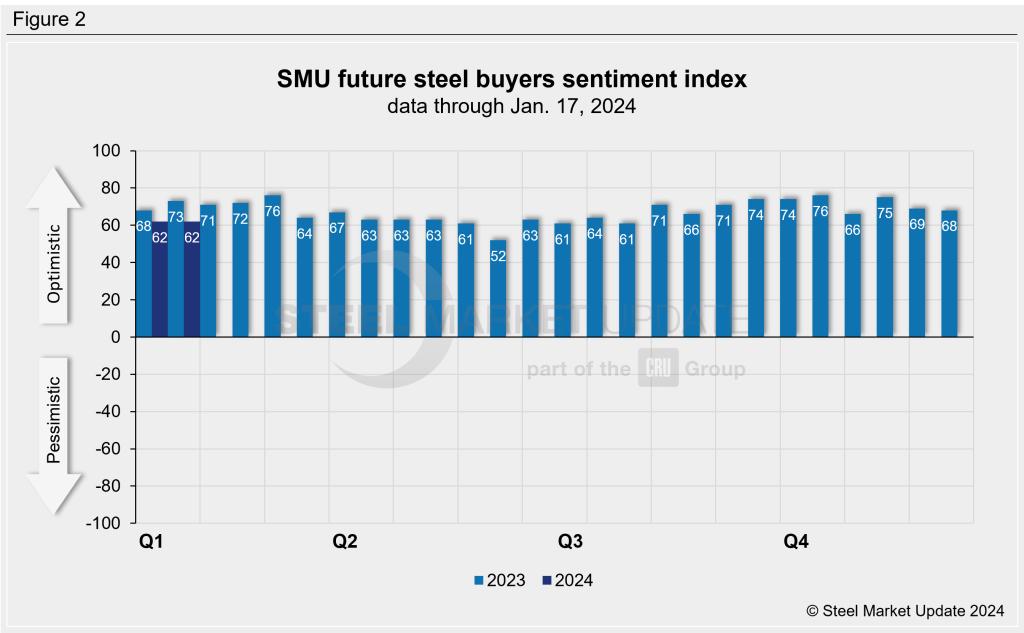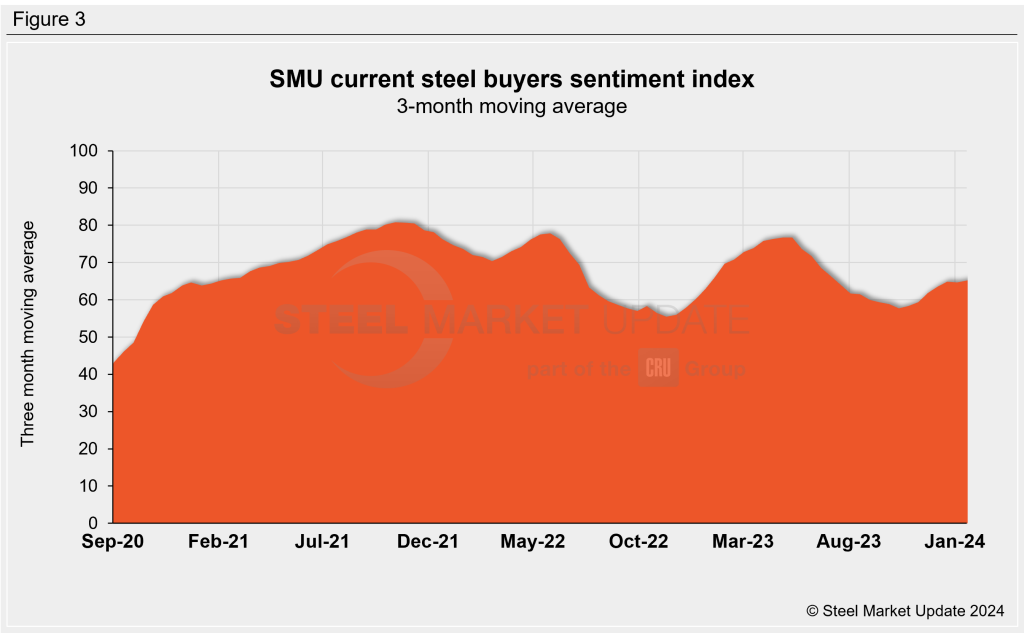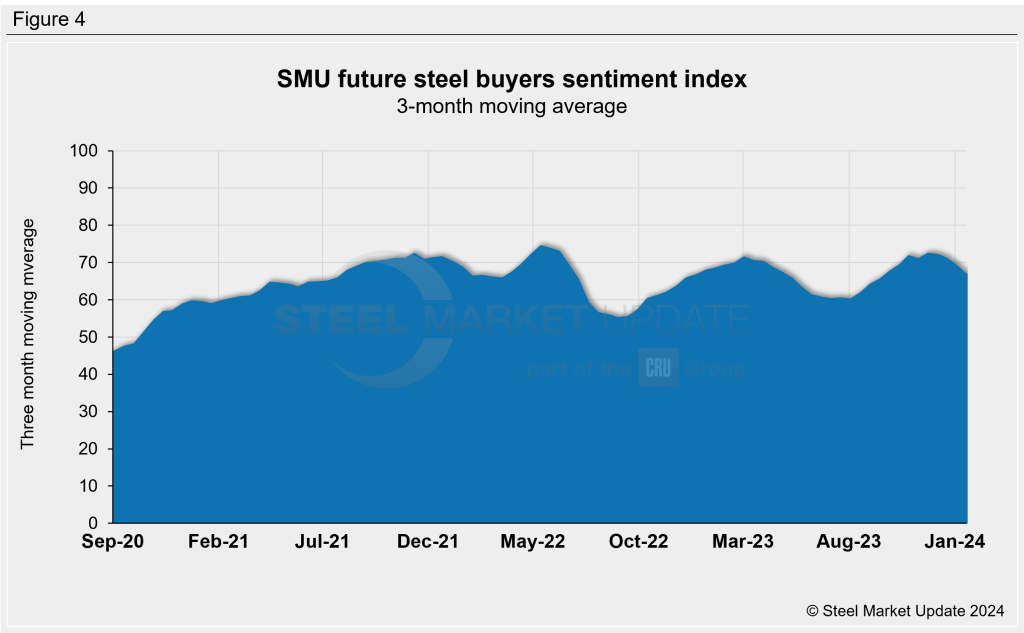Market Data
January 19, 2024
SMU survey: Current Sentiment Index soars, Future Sentiment levels
Written by Ethan Bernard
SMU’s Current Steel Buyers Sentiment Index jumped this week, while the Future Sentiment Index remained flat, according to our most recent survey data.
Every other week, we poll steel buyers about sentiment. The indices measure how steel buyers feel about their companies’ chances of success in the current market and three-to-six months down the road. (We have historical data going back to 2008. You can find that here.)
SMU’s Current Buyers Sentiment Index stood at +67 this week, increasing 11 points from +56 two weeks earlier (Figure 1). This marks a return to the territory it was in for much of Q4’23.

SMU’s Future Buyers Sentiment Index measures buyers’ feelings about business conditions three to six months in the future. This week, the index was flat at +62 (Figure 2). Future Sentiment has remained above +60 since June of last year.

Measured as a three-month moving average, the Current Sentiment 3MMA rose to +65.17 from +64.67 two weeks earlier. (Figure 3).

This week’s Future Sentiment 3MMA fell to +67.00 vs. +69.33 at the previous market check (Figure 4).

What SMU respondents had to say:
“Good to fair (right now). Q2 and Q3 could be tricky.”
“Headwinds will slow the economy.”
“Economy has slowed.”
“I think we will be fine, but the market will be tricky to thread the needle on stock levels.”
“We have doubts about how the upcoming elections in Mexico might affect the demand for steel.”
About the SMU Steel Buyers Sentiment Index
The SMU Steel Buyers Sentiment Index measures the attitude of buyers and sellers of flat-rolled steel products in North America. It is a proprietary product developed by Steel Market Update for the North American steel industry. Tracking steel buyers’ sentiment is helpful in predicting their future behavior.
Positive readings run from +10 to +100. A positive reading means the meter on the right-hand side of our home page will fall in the green area, indicating optimistic sentiment. Negative readings run from -10 to -100. They result in the meter on our homepage trending into the red, indicating pessimistic sentiment. A reading of “0” (+/- 10) indicates a neutral sentiment (or slightly optimistic or pessimistic), which is most likely an indicator of a shift occurring in the marketplace. Sentiment is measured twice per month via SMU surveys. If you would like to participate in our survey, please contact us at info@steelmarketupdate.com.







